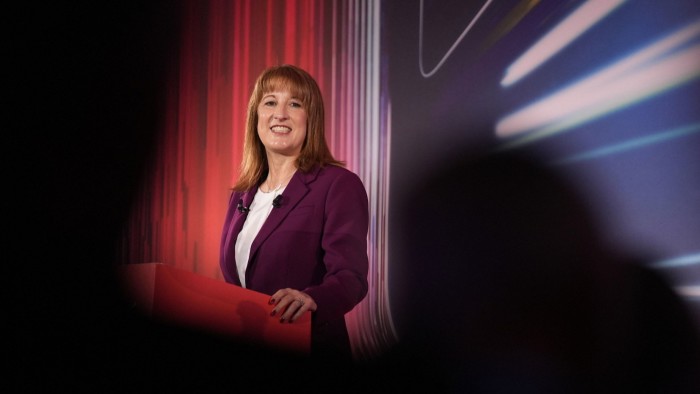Unlock the Editor’s Digest for free
Roula Khalaf, Editor of the FT, selects her favourite stories in this weekly newsletter.
Chancellor Rachel Reeves could be given a Budget boost worth billions of pounds as good news on inflation prompted sharp new falls in government borrowing costs, with the yield on a two-year gilt falling to its lowest level for more than a year.
A softer than expected September inflation reading on Wednesday helped bring down government borrowing costs, alleviating some of the pressure on the public finances.
The moves could feed into crucial forecasts prepared by the independent Office for Budget Responsibility depending on the time window the agency uses for its projections — with some analysts speaking of potential savings of between £2bn and £3bn or more from moves over recent days.
The chancellor is heading into what her allies admit will be a “tough” Budget, with downgrades to OBR productivity estimates expected to widen a hole in the public finances that could be worth up to £30bn. Movements in government borrowing costs help determine that forecast, which will be delivered on November 26 alongside the Budget.
The impact of lower borrowing costs on the outlook for the public finances will depend on the timing of the OBR’s “observation window”. This is a period, normally 10 working days, over which the watchdog measures market movements that it then uses for its forecasts. The OBR does not normally disclose the date of the window until about a week before the budget.
Rob Wood, an economist at Pantheon Macroeconomics, said recent falls in gilt yields could save Reeves £2bn-£3bn, if the observation window ended on Wednesday instead of a week-and-a-half earlier. If the low yields on Wednesday were to prevail for the entire 10-day period, the savings would be larger, analysts said.
“The soft inflation surprise and subsequent fall in gilt yields are a rare bit of good news for the chancellor,” said Ruth Gregory, economist at Capital Economics. “Admittedly, the recent falls in gilt yields may have come too late to be included in the OBR’s forecast.”
Some analysts think the 10-day window used by the OBR to gauge borrowing costs probably closed about October 13, before the bulk of the recent rally in gilts.
However, the OBR has the ability to change its observation window in the case of dramatic changes closer to the Budget. A spokesperson for the OBR pointed as an example to the forecast close to the time of Russia’s full-scale invasion of Ukraine in 2022, when it reopened its observation window to take account of market movements.
UK government bonds rallied on Wednesday after official figures unexpectedly showed consumer price inflation holding steady at 3.8 per cent — defying predictions from the Bank of England for an acceleration to 4 per cent.
That prompted traders to price in rising chances of an interest rate cut by the BoE before the end of the year, after the central bank held borrowing costs at 4 per cent in its September meeting.
Yields on the 10-year gilt are down by nearly 0.3 percentage points since the start of the month. Yields move in the opposite direction to prices.
The yield on the two-year gilt, which is sensitive to interest rate expectations, dropped 0.08 percentage points to 3.78 per cent on Wednesday, its lowest level for more than a year.
The yield on the 10-year gilt dropped 0.06 percentage points to 4.42 per cent. Lower yields are helpful to the chancellor given the OBR uses them to estimate government interest costs in its forecasts, which are released at the same time as the Budget and spell out whether or not she is meeting her fiscal rules.
“It is a helpful backdrop for the chancellor,” said Simon French, economist at Panmure. “Animal spirits are not great out there,” he added, but sentiment had moved in the chancellor’s favour since “peak pessimism in mid-September”.
Leading into the budget, stronger bond prices and lower inflation could “help the narrative a bit,” said Hetal Mehta at wealth manager St James’s Place.
But she warned that the context remained a weakening labour market and inflation that is still well above the BoE’s official target.
“It helps the public finances, but it is harder to turn that into a positive as opposed to growth picking up and business sentiment on the up.”
